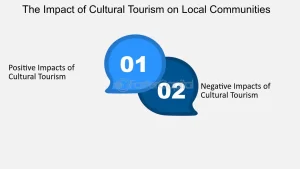In a rapidly changing world, the preservation of traditional practices is increasingly vital. These customs not only establish a connection to our history but also enhance our cultural identity, fostering a sense of community involvement and generational knowledge.
Today’s youth play a crucial role in both the preservation and innovation of these practices to ensure their modern relevance. This article explores the significance of traditional practices, the consequences of their potential loss, and the inspiring ways in which young individuals are actively engaging and innovating to ensure that these essential elements of culture, such as folklore and rituals, thrive in contemporary society.
We will examine the challenges faced, potential solutions, and successful youth-led initiatives that reinvigorate cherished traditions.
The Importance of Preserving Traditional Practices
.jpg_00.jpeg)
In an era characterized by rapid modernization and cultural transformations, the significance of preserving traditional practices cannot be overstated. These practices serve as essential mechanisms for maintaining cultural heritage, fostering community engagement, promoting sustainability, and enhancing cultural innovation.
They encapsulate the values, beliefs, and customs that shape a community’s identity, ensuring intergenerational dialogue and the continuity of ancestral knowledge. By acknowledging the importance of folklore, rituals, craftsmanship, and storytelling, society can cultivate resilience and responsibility among its youth while advocating for the revival of these crucial elements of cultural identity.
This preservation not only honors historical roots but also contributes to social change, inclusion, and community resilience.
Why Do Traditional Practices Matter?
Traditional practices hold significant importance as they serve as a repository of cultural identity, encapsulating the values, beliefs, histories, and diverse traditions of communities. They provide a sense of belonging and continuity through generations.
These cherished customs, whether expressed through art, music, or rituals, are not merely forms of creativity; they are also crucial in nurturing a shared sense of purpose among community members. Storytelling, which intertwines with these traditions, imparts lessons from the past, strengthens intergenerational bonds, and fosters understanding within diverse cultural contexts.
When communities actively engage in the preservation of their heritage, they not only sustain their unique narratives but also enhance social cohesion, enabling individuals to connect more profoundly with one another and fostering cultural sensitivity and appreciation.
In an increasingly globalized world, such efforts are essential for safeguarding the rich tapestry of human experience, ensuring that the essence of each culture thrives for future generations.
What Are the Consequences of Losing Traditional Practices?
The consequences of losing traditional practices can be significant and far-reaching, resulting in a marked decline in cultural diversity and a loss of identity that may adversely impact communal and social dynamics.
As traditions diminish, communities may experience weakened bonds, given that shared rituals, values, and customs often serve as the foundation for connection, mutual understanding, and identity preservation. This erosion may give rise to grassroots movements aimed at reclaiming heritage, as individuals unite to advocate for the recognition and preservation of their cultural narratives through activism and community resilience.
Such initiatives not only reinforce identity formation but also catalyze social change by enableing marginalized voices. Through advocacy, communities can explore innovative methods to integrate traditional practices into modern frameworks, thereby fostering a more inclusive society that honors its roots while adapting to future challenges.
The Role of Youth in Preserving Traditional Practices
The role of youth in preserving traditional practices is crucial, as they act as custodians of cultural heritage while also introducing fresh perspectives and innovative approaches that can revitalize these practices for future generations.
Through their engagement, creativity, and dedication, young individuals can promote intergenerational dialogue that bridges the gap between tradition and modernization, ensuring that the wisdom of the past remains pertinent in today’s rapidly changing landscape.
Empowering youth to assume leadership roles in heritage conservation initiatives fosters a sense of responsibility, resilience, and social responsibility while enhancing their cultural identity.
Why Is the Youth Important in Preserving Traditional Practices?
Youth play a crucial role in the preservation of traditional practices, as they embody adaptability and innovation, which are vital for the cultural transmission and evolution of these practices within contemporary society.
Their fresh perspectives facilitate a cultural responsiveness that resonates with both their peers and older generations, fostering dynamic dialogue surrounding traditions. Through experiential learning, young individuals not only revitalize age-old customs but also ensure that these practices evolve in ways that are pertinent to the modern world.
This unique position allows them to bridge the gap between the past and the future, transforming cultural preservation into a vibrant and ongoing journey. As they embrace and reinterpret these traditions, they make significant contributions to a shared heritage that reflects the diverse voices within their communities.
What Can the Youth Do to Preserve Traditional Practices?
.jpg_01.jpeg)
The youth can play a transformative role in the preservation of traditional practices through various avenues, including participation in youth programs, engagement in cultural education, volunteerism, and the active sharing of skills with their peers.
By participating in workshops and community projects, they have the opportunity to enhance their knowledge while fostering collaboration with others who share similar interests. As cultural ambassadors, young individuals possess a unique opportunity to advocate for the significance of cultural education, effectively linking their heritage to contemporary issues.
Through the utilization of social media platforms, they can raise awareness about traditional practices and their relevance, thereby inspiring a broader audience. This digital outreach enables them to showcase events, share narratives, and promote public awareness, ultimately contributing to the creation of a vibrant community committed to celebrating their rich cultural heritage.
Innovating Traditional Practices for the Modern World
Innovating traditional practices for the modern world is crucial for ensuring their relevance and sustainability in contemporary society, as this process serves to bridge the gap between rich cultural heritage and the demands of modern life through creative industries and entrepreneurship.
By leveraging creativity and technological integration, traditional practices can be adapted and revitalized, fostering a harmonious balance between innovation, preservation, and cultural collaboration.
This strategic approach not only appeals to younger generations but also enhances participation, representation, and awareness in cultural practices, thereby ensuring their continued significance within an evolving cultural landscape.
Why Is Innovation Necessary for Traditional Practices?
Innovation is essential for traditional practices to remain relevant and engaging, enabling them to adapt to the evolving needs and expectations of contemporary communities while preserving their cultural essence.
In this context, community engagement assumes a critical role, facilitating the incorporation of diverse perspectives, artistic expression, and cultural events that reflect the collective values and aspirations of its members.
By promoting collaboration among local artists, historians, and community leaders, cultural practices can evolve while honoring their historical roots. This dynamic adaptation not only enhances cultural responsiveness but also fortifies social bonds, creating an inclusive environment that celebrates heritage and fosters community activism.
Ultimately, embracing innovation is vital to ensuring that these practices resonate with future generations, rendering them accessible and meaningful in an ever-changing world influenced by globalization.
How Can the Youth Innovate Traditional Practices?
Youth have the potential to innovate traditional practices by embracing creative expression and utilizing technology to reimagine age-old customs and rituals, thus enhancing accessibility and engagement for their peers.
Through digital platforms, they are not only preserving cultural narratives but also reshaping them, allowing for artistic interpretations to flourish in the online realm and fostering intercultural dialogue. This dynamic shift promotes collaboration among young creators, enabling them to share their unique stories while receiving valuable mentorship from more experienced artists.
Skill development initiatives and mentorship can further advance this movement, enabling youth to channel their creative energies in meaningful ways. Grassroots efforts can amplify their voices, ensuring that a diverse range of perspectives is celebrated, ultimately fostering a vibrant community dedicated to cultural storytelling and innovation.
Examples of Youth-led Initiatives in Preserving and Innovating Traditional Practices
Youth-led initiatives are integral to the preservation and innovation of traditional practices, acting as catalysts for cultural diplomacy and creative expression. They exemplify the effectiveness of grassroots movements and cultural exchange in promoting community development and engagement.
Case Study 1: Reviving Traditional Crafts through Youth-led Workshops
.jpg_10.jpeg)
An exemplary instance of a youth-led initiative is the revival of traditional crafts through workshops designed to engage young individuals in skill-sharing, experiential learning, and hands-on learning experiences.
These workshops employ specific strategies such as collaborative storytelling, where participants articulate the cultural significance of various crafts, thereby fostering a deeper connection to their cultural heritage. Engaging in hands-on practice with techniques such as weaving or pottery enables youth to refine their skills and craftsmanship while reinforcing community ties and promoting cultural identity.
The outcomes of this initiative include the creation of functional art pieces that are showcased in local exhibitions, thereby drawing attention to the importance of cultural preservation and sustainability, as well as the creative expression of generational knowledge and traditions.
The broader implications of these efforts contribute significantly to community resilience by enabling the younger generation to uphold their identity, strengthen social bonds, and promote cultural appreciation in an increasingly globalized world. This process of identity formation is crucial as it involves preserving traditional practices and customs, which are vital to cultural transmission.
Case Study 2: Using Technology to Document and Share Traditional Practices
Another significant initiative involves youth leveraging technology to document and share traditional practices, effectively utilizing social media platforms to reach a broader audience and engage younger generations in cultural innovation and heritage preservation.
This innovative approach not only serves to preserve cultural heritage but also fosters a sense of belonging and pride within local communities. Through documentation and oral history, young individuals capture unique stories, rituals, folklore, and art forms that may otherwise fade into obscurity.
Social media functions as a dynamic tool, enabling these efforts to thrive across geographical boundaries and facilitating cultural exchange and intergenerational dialogue, thus promoting inclusivity and public awareness.
By capitalizing on innovation hubs, communities can further enhance their digital presence, creating interactive platforms for sharing resources and ideas. The resulting awareness promotes cultural sustainability, enabling individuals to actively participate in the preservation of their heritage while encouraging collaboration and youth engagement among diverse groups.
Ultimately, this synergy between technology and tradition enriches the community’s identity, ensuring that cultural practices remain relevant and vibrant, thus safeguarding their legacy and fostering cultural diplomacy.
Challenges and Solutions in Youth-led Preservation and Innovation of Traditional Practices
Youth-led preservation and innovation of traditional practices offer numerous opportunities; however, they also face considerable challenges that necessitate thoughtful solutions to ensure sustainability and efficacy in cultural engagement and empowerment.
What Are the Challenges Faced by Youth in Preserving and Innovating Traditional Practices?
The challenges encountered by youth in the preservation and innovation of traditional practices are often rooted in cultural barriers, resource limitations, and the difficulties associated with engaging their peers in these endeavors. These challenges require creative solutions and cultural sensitivity to foster successful youth-led initiatives.
These challenges manifest in various ways within communities, including a lack of access to funding for cultural initiatives, insufficient opportunities for youth to learn from elders, and limited platforms for cultural activism and volunteerism.
For instance, in urban environments, young individuals may find it challenging to identify spaces that honor traditional practices amidst a plethora of modern influences. However, engagement strategies that emphasize participation, collaboration, and cultural mapping can create pathways for cultural revitalization and innovation strategies.
By promoting cultural responsiveness, community leaders can enable youth to take ownership of their heritage, facilitating projects that not only respect tradition but also encourage innovative expressions, such as traditional music, dance, and culinary arts, that are distinct to their generation.
How Can These Challenges Be Overcome?
Overcoming the challenges encountered by youth in the preservation and innovation of traditional practices necessitates a multifaceted approach that encompasses collaboration, mentorship, and the enhancement of cultural education initiatives, including creative industries and experiential learning opportunities.
By cultivating partnerships with community leaders and enabling grassroots movements, young individuals acquire valuable guidance, skills, and essential resources for navigating this intricate landscape. Such initiatives not only advocate for the significance of cultural sustainability but also foster an environment in which traditional knowledge and cultural exchange can thrive.
The implementation of mentorship programs serves to bridge the gap between seasoned practitioners and emerging talents, facilitating the exchange of ideas and best practices. When local leaders actively engage with youth initiatives, the collective emphasis on heritage preservation transforms into a shared responsibility, thereby ensuring a vibrant future for cultural traditions and encouraging youth advocacy.
Frequently Asked Questions
.jpg_11.jpeg)
What is the role of youth in preserving traditional practices?
Youth play a crucial role in preserving traditional practices by passing down cultural knowledge and skills to future generations.
How do youth contribute to the innovation of traditional practices?
Youth bring fresh perspectives and ideas to traditional practices, leading to the adaptation and evolution of these practices to suit modern times. This includes the integration of digital tools and creative expression in traditional customs.
Why is it important for youth to be involved in preserving and innovating traditional practices?
Youth are the future custodians of our cultural heritage, and by involving them in preserving and innovating traditional practices, we ensure the continuity and relevance of these practices for generations to come.
What are some ways in which youth can preserve traditional practices?
Youth can preserve traditional practices by actively participating in cultural events, learning from elders, and passing down their knowledge to their peers and future generations.
How can youth help to innovate traditional practices?
Youth can introduce new technologies, modern methods, and creative ideas to traditional practices, leading to their adaptation and improvement. This process enhances cultural innovation and supports the preservation of local traditions.
What are the benefits of involving youth in preserving and innovating traditional practices?
Involving youth in preserving and innovating traditional practices not only ensures their preservation and evolution but also helps to bridge the generation gap, promote cultural diversity and understanding, and encourage entrepreneurship and social responsibility.

My name is Bruno, I have been a writer for 5 years and I work with website creation. My goal is to provide true information to readers. In fact, on this site I write about cultures and traditions, which I have been passionate about since childhood.




